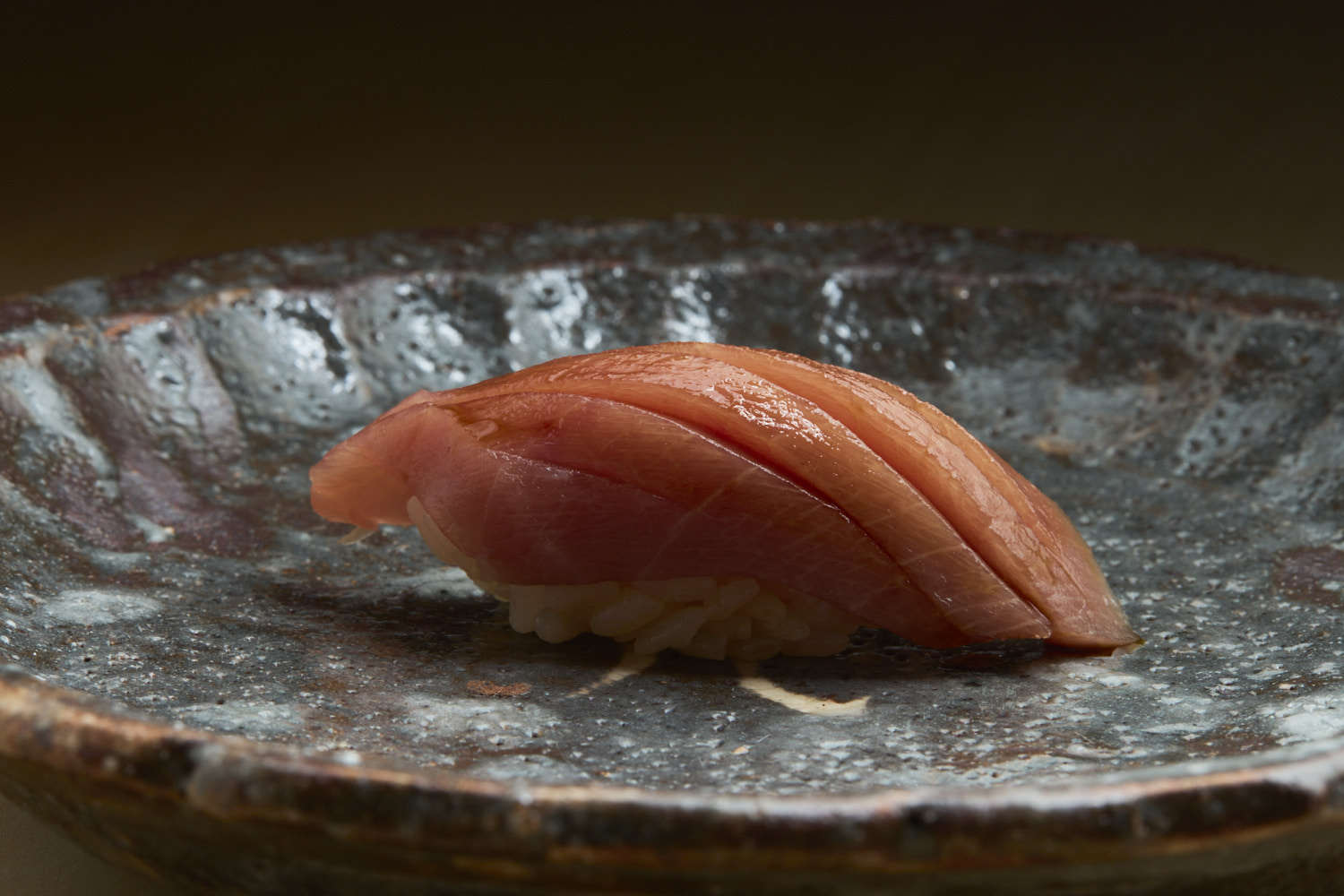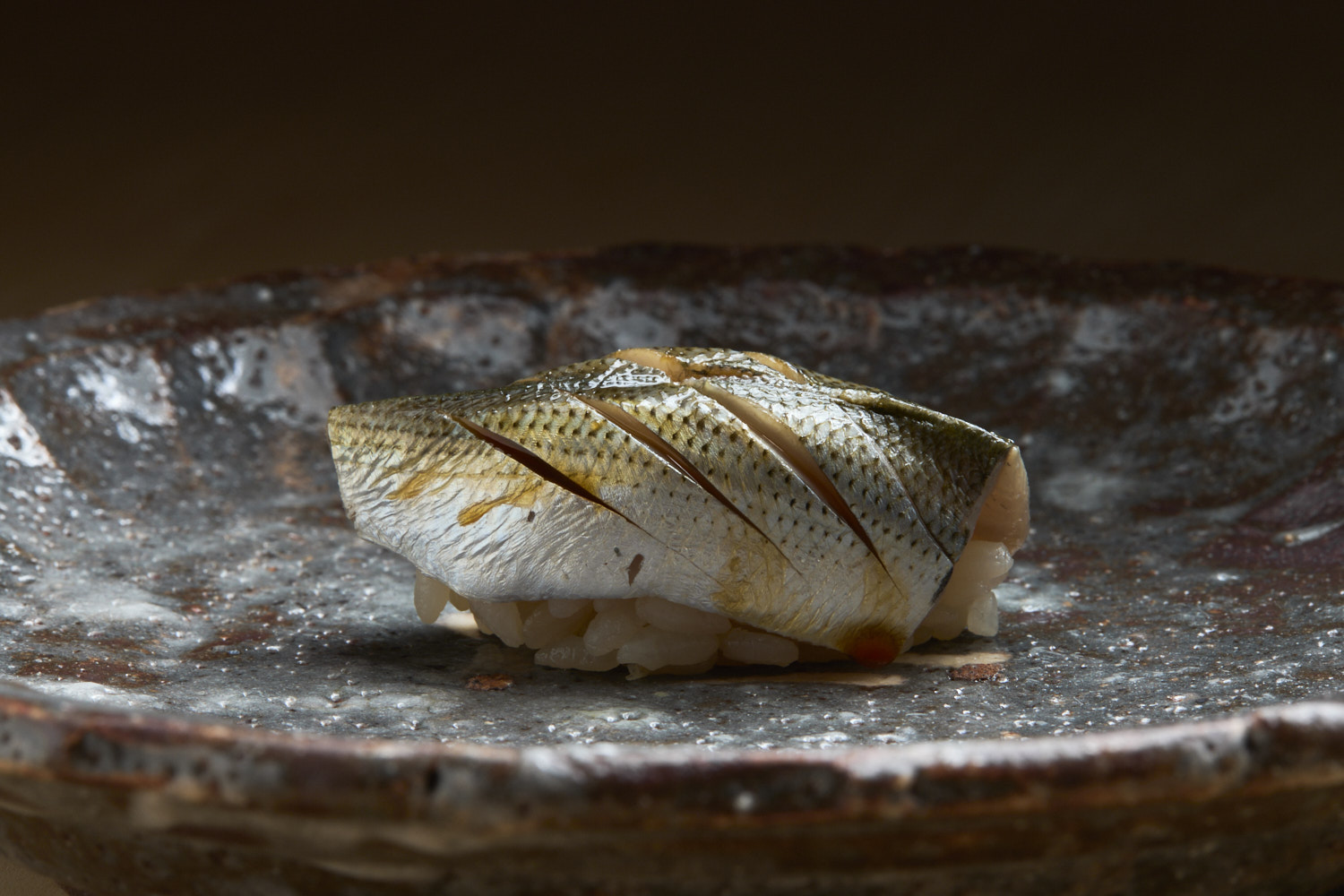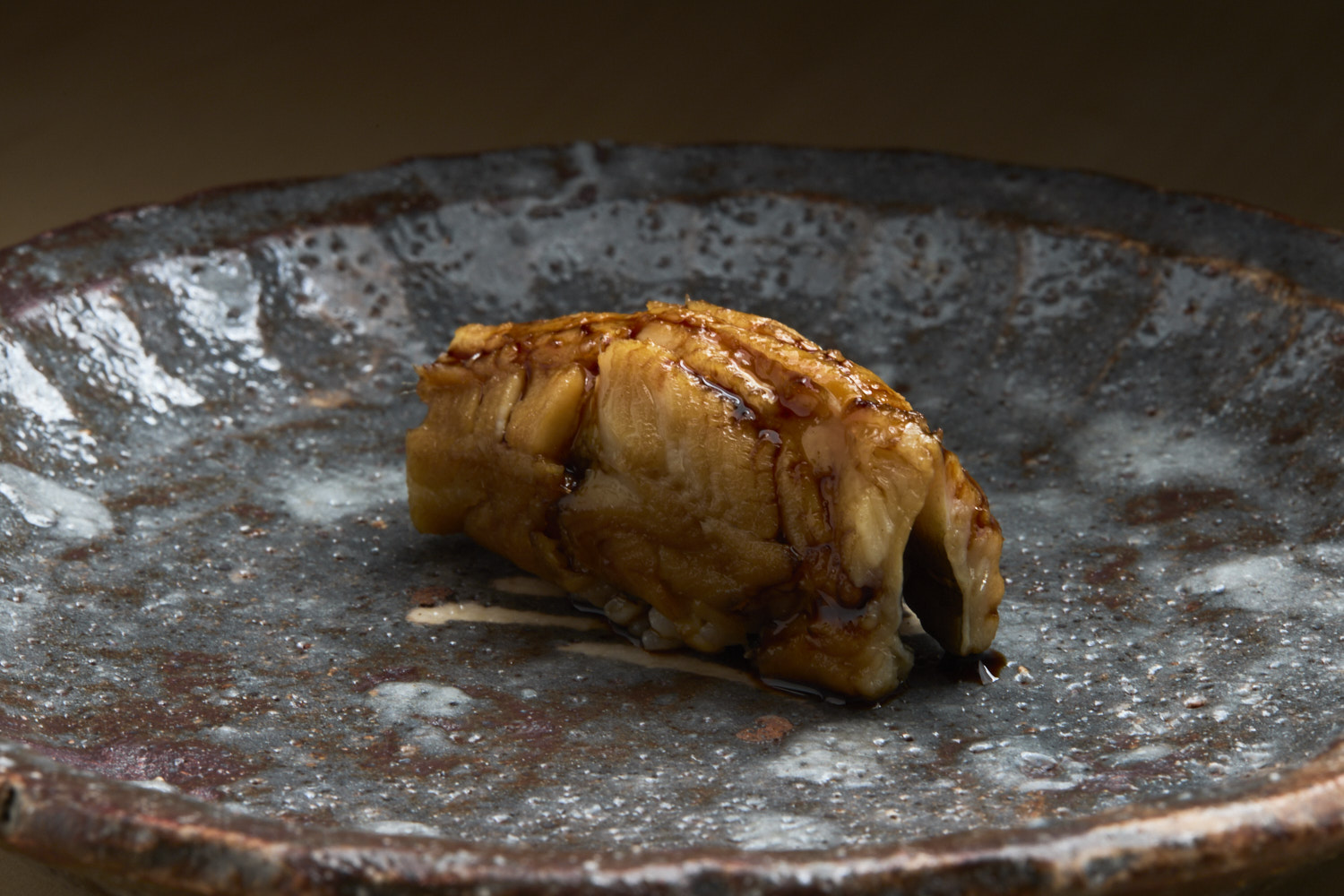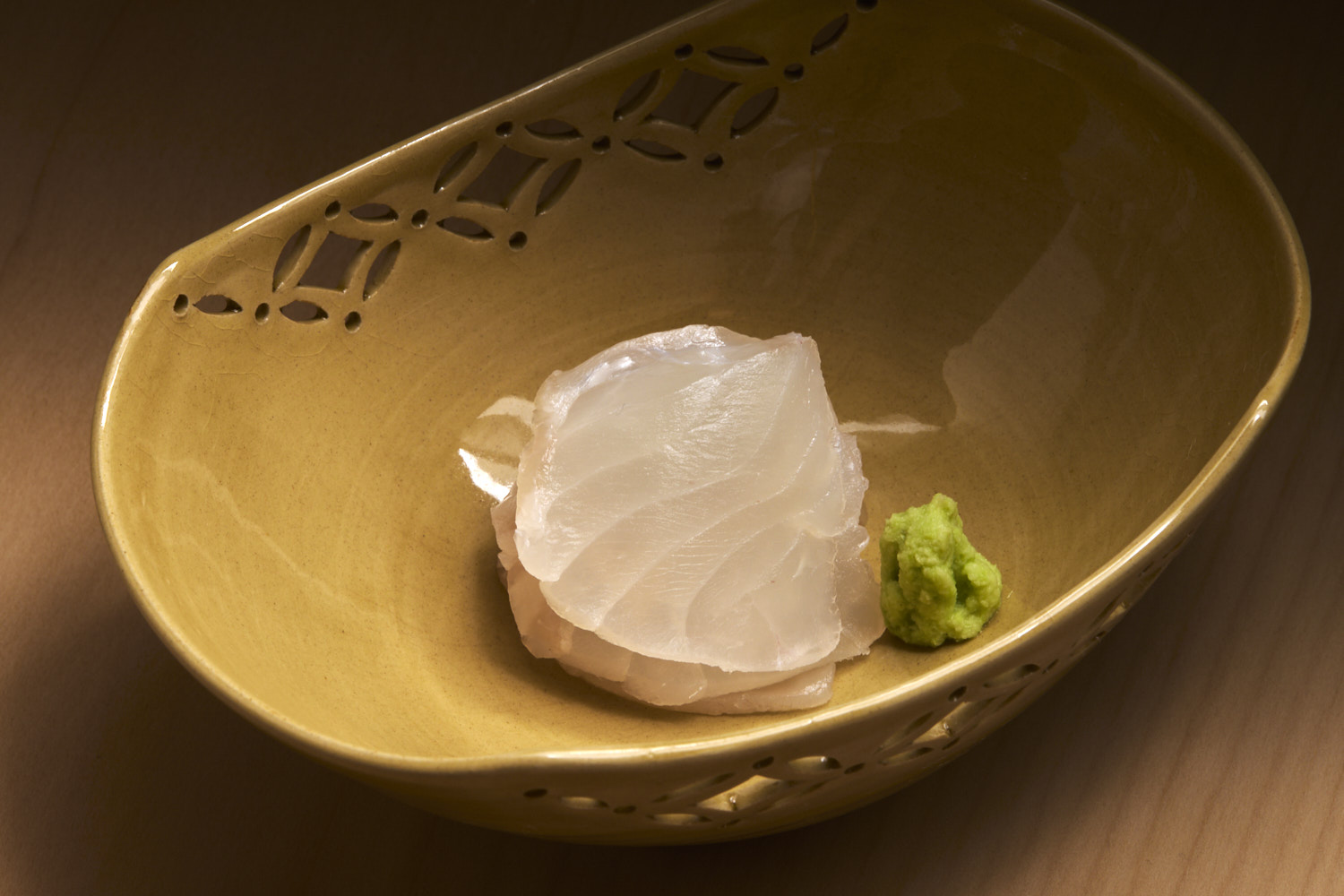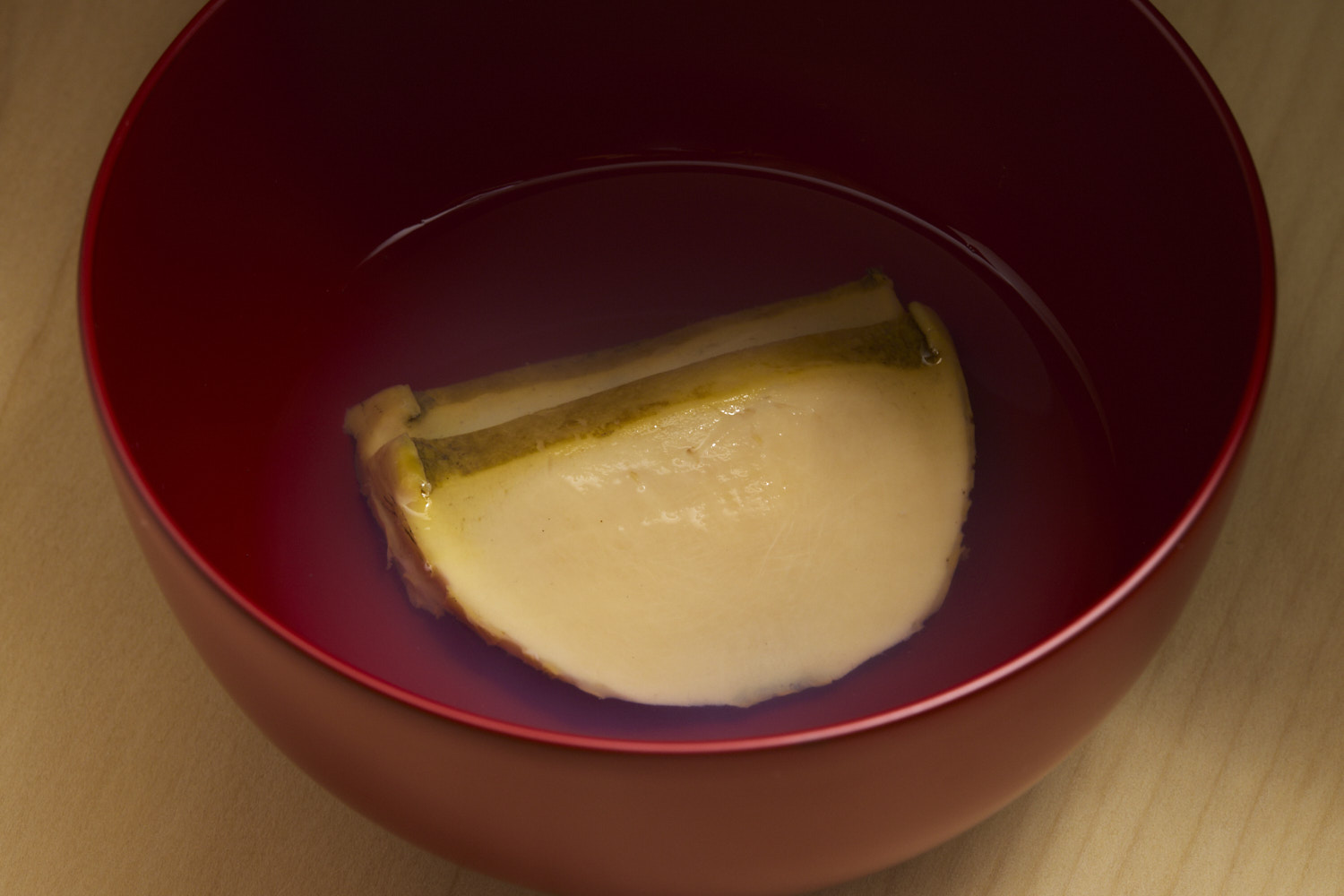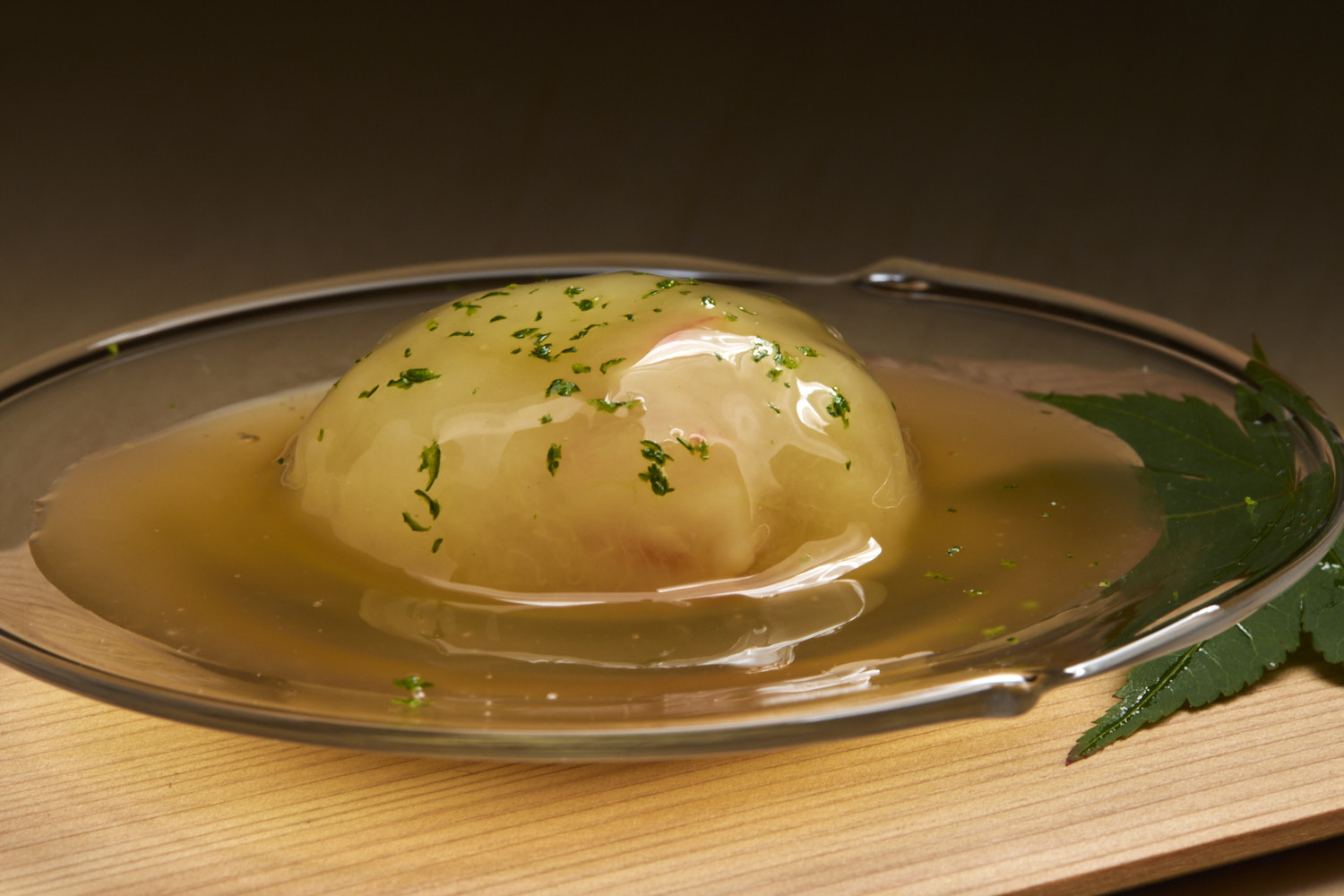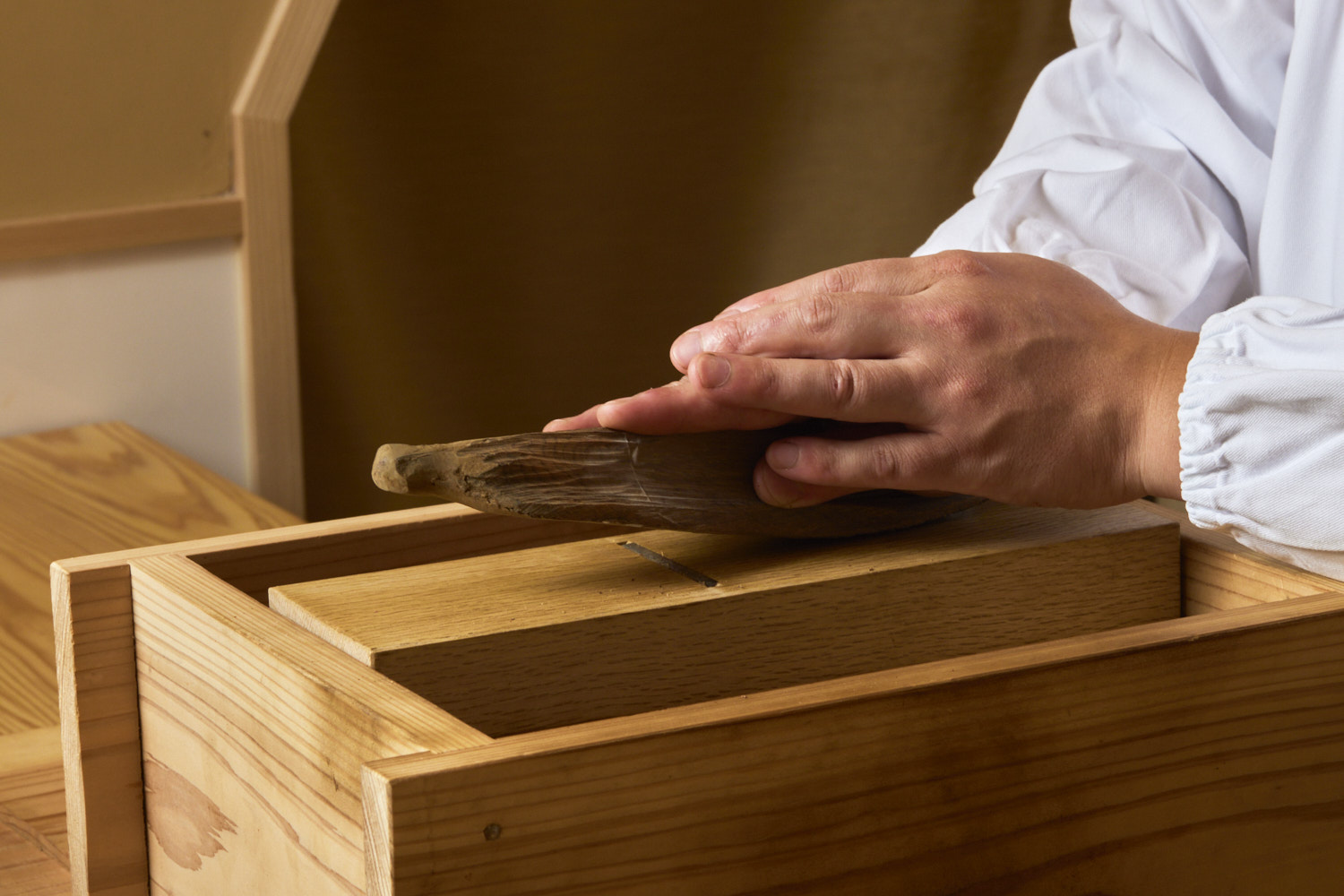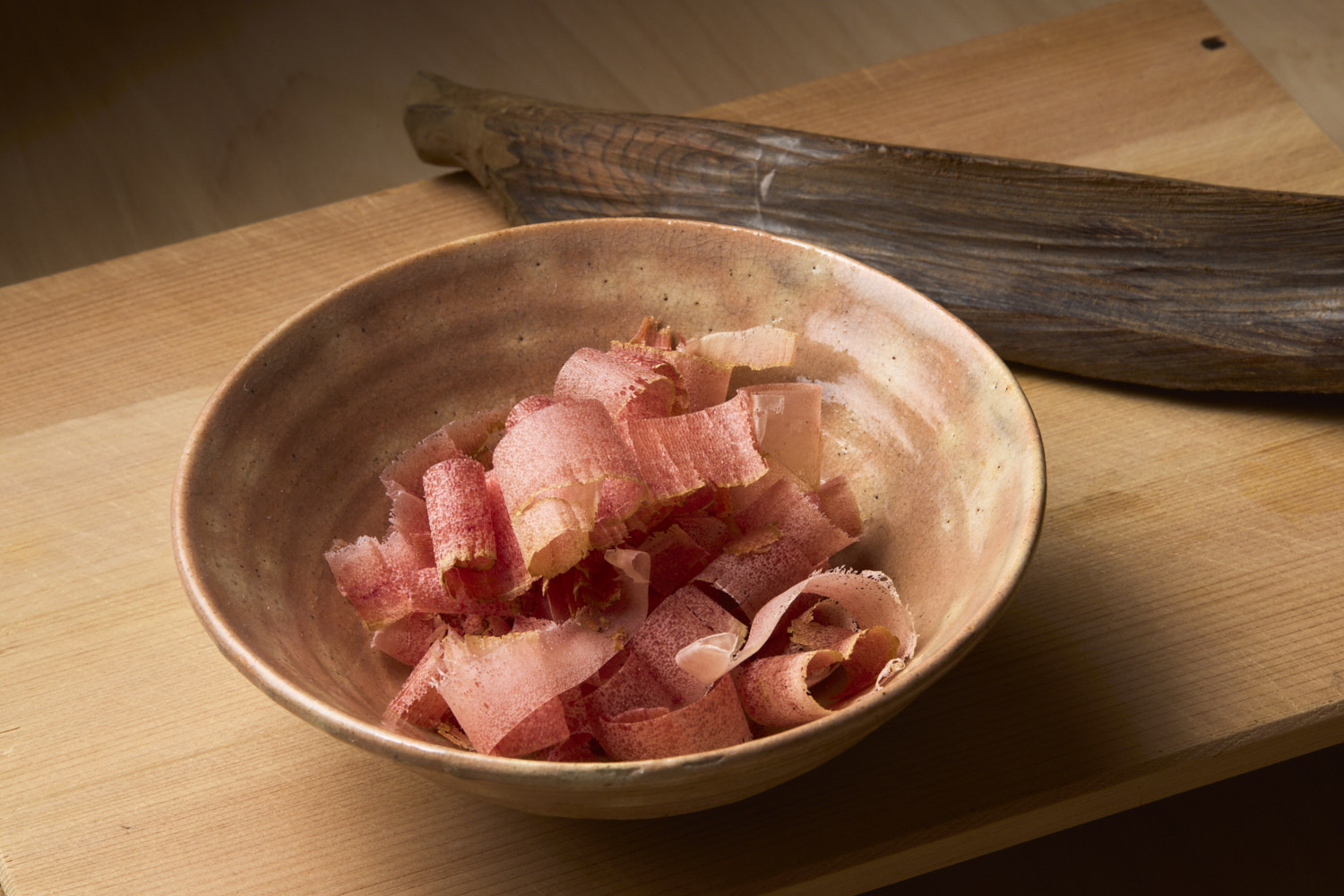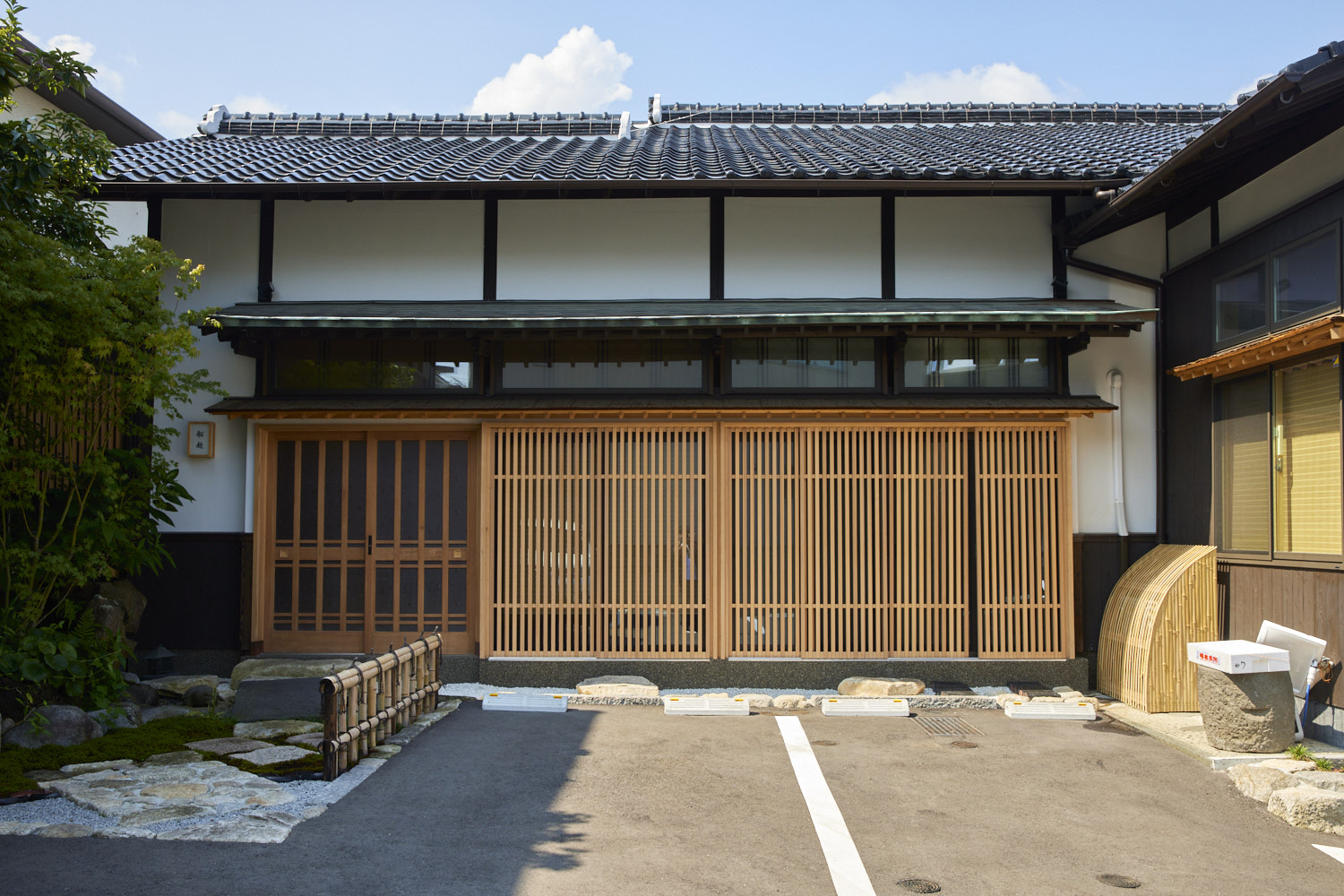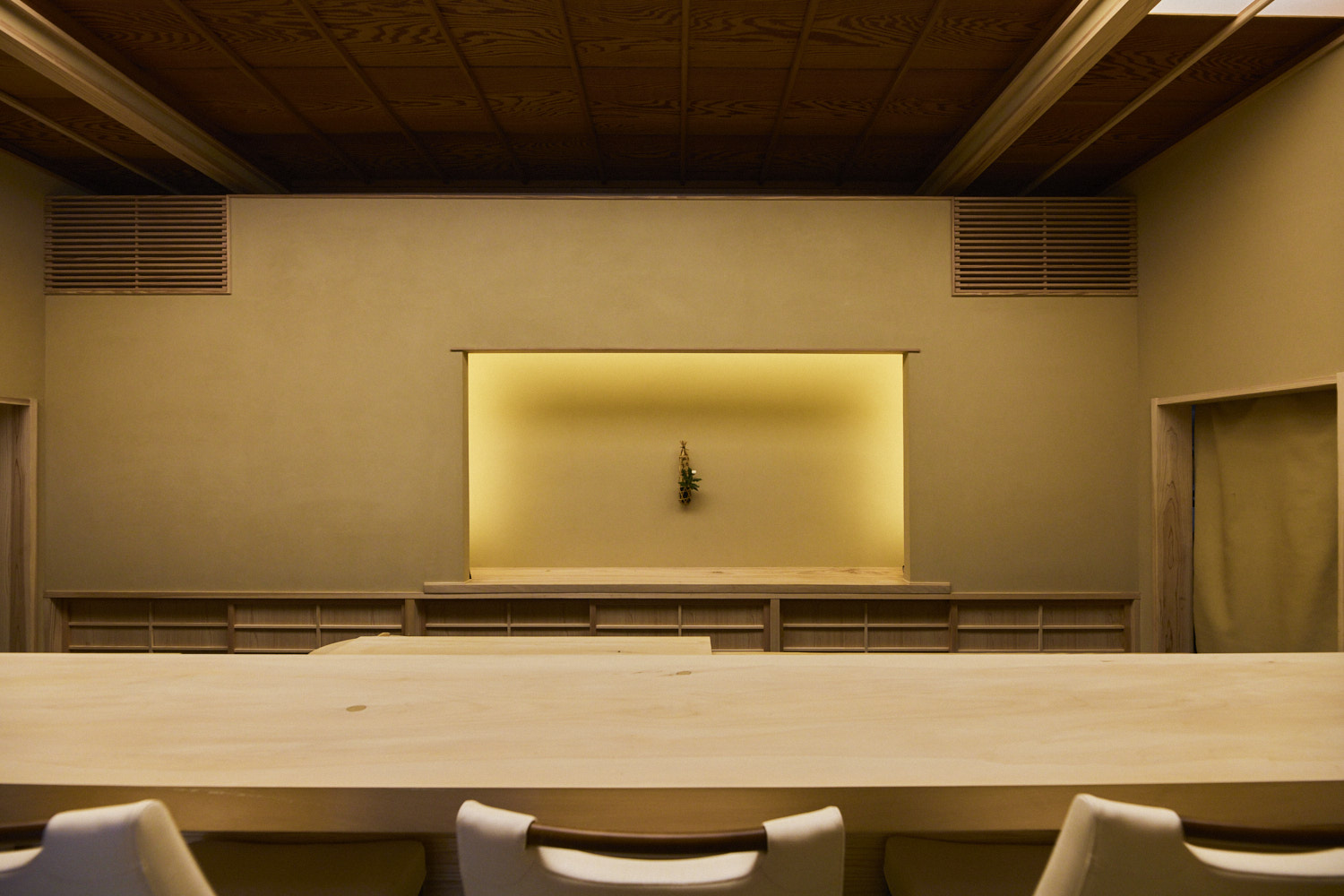
Fukuoka
Funakoshi
船越
Housed in a 70-year-old family home that Chef Hisanari Funakoshi restored with his father, this Fukuoka restaurant offers an experience that extends beyond sushi. Centered on fresh catches from local bays, the omakase moves between classic kaiseki and sushi, giving guests a chance to enjoy two culinary traditions in a single sitting. Among the highlights, the anago is simmered until tender and brushed with a sweet sauce that has been aged for decades. It is the kind of place that rewards a journey to Kyushu.
Funakoshi opened in November 2024 in a quiet residential neighborhood, just a short drive from Hakata Station. The house once belonged to the chefʼs grandfather and had been slated for demolition. Instead, the family decided to preserve it, carrying forward its memory as Funakoshiʼs new restaurant. His father, a retired architect, oversaw its design. The elegant
entrance is framed in light wood and softened by greenery.
Guests are asked to remove their shoes at the door, a small gesture intended to evoke the spirit of a traditional tea room. Inside, a long ginkgo-wood counter stretches across the room with eight white chairs placed neatly in line. A ceiling of shoji-like panels filters the daylight, filling the space with a soft glow. A seasonal flower arrangement and antique tableware stand behind the counter as part of the warm welcome.
CUISINE
Local catch, crafted with precision
The omakase is made up of about seven traditional dishes and a full sequence of nigiri, reflecting the chefʼs versatility across Japanese traditions. The first dish of the meal is a bowl
of clear soup, featuring a key seasonal ingredient such as abalone or tilefish, steeped in fragrant dashi. Sashimi features the dayʼs local catch, often grouper, which the chef describes
as one of Kyushuʼs finest white fish.
A chilled winter melon dish follows, where the vegetable is simmered and shaped into a smooth ball, served with shiitake mushrooms and tiger prawns. The presentation is simply
stunning. Takiawase is a classic dish where fish and vegetables are cooked in their own seasoning before being brought together in one bowl. This cooking style preserves the
character of each ingredient while allowing guests to enjoy the flavors in harmony.
The nigiri courses begin with white fish before moving through stronger blue-backed fish and rich tuna. The sushi rice is carefully prepared using large grains that are cooked firmly in a kamado pot. Itʼs seasoned with rice vinegar for a softer foundation that doesnʼt overpower the flavor of the fish.
Gizzard shad, or kohada, is sourced from Meinohama in western Fukuoka City, cured firmly with salt and vinegar until its sharpness softens. The dayʼs chutoro is cut from a 173-kg tuna caught in the local waters. Kyushu tuna is savored for its lightness, the chef proudly explains.
Anago from Tsushima Island is simmered until soft and fluffy, and brushed with a sauce
passed down from his mentor that has been nurtured for more than three decades. The last
dish, tamagoyaki, is the signature egg omelet, seasoned with nothing more than sugar. Its
gentle sweetness is reminiscent of castella cake.
INGREDIENT
Focused on his home region, Funakoshi sources his fish from local markets. He explains that while all of Kyushuʼs seafood has appeal, the white fish in particular stands out for its freshness and depth of flavor. The local tuna, smaller in size than those from Hokkaido, carries a cleaner, lighter taste, he says.
The rice is a blend of Sagabiyori grains from Saga and Aichi Kaori from Aichi Prefecture. For seasoning, the chef uses Shobunsu vinegar from Okawa City in Fukuoka, which brings out clarity to the flavor of the rice.
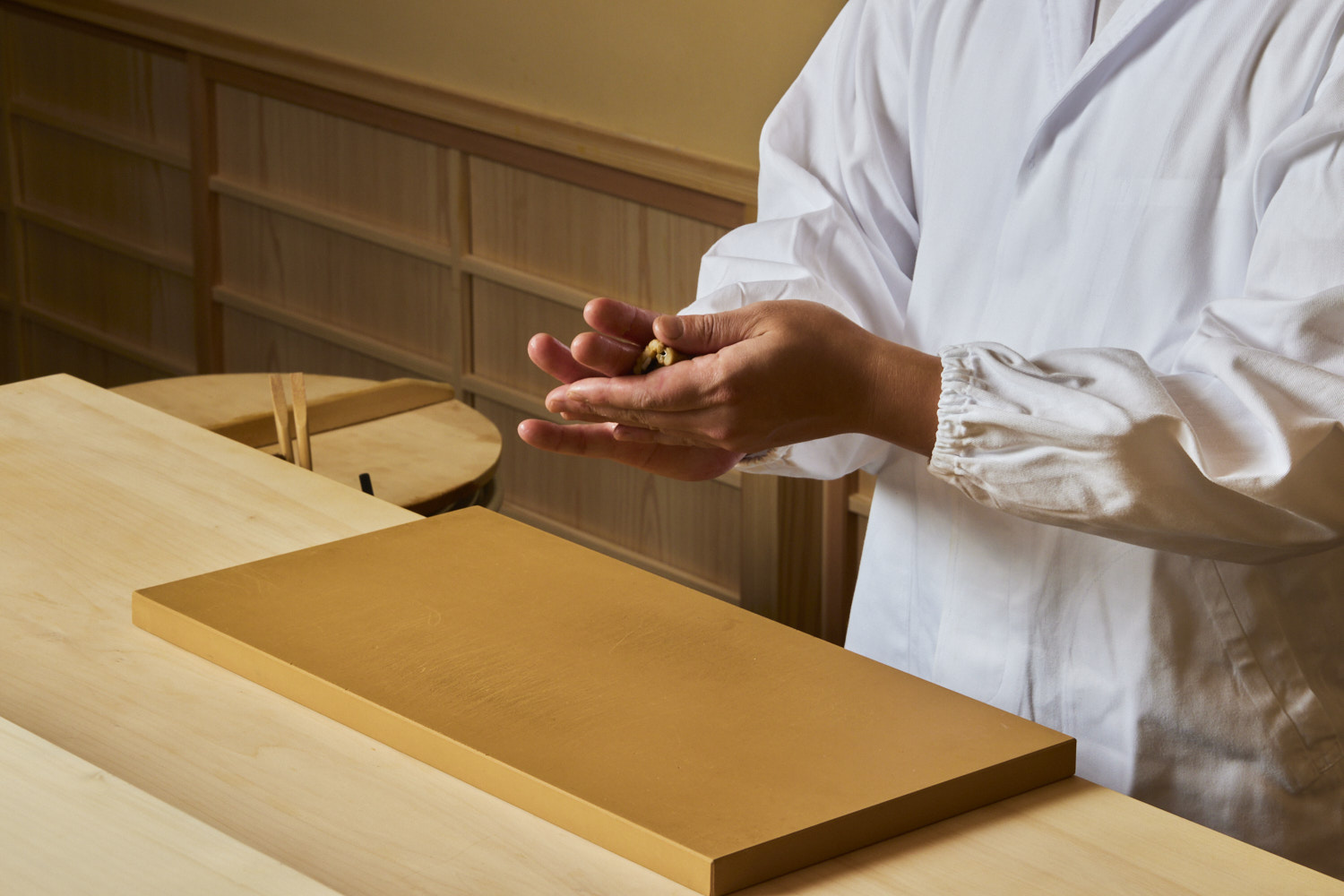
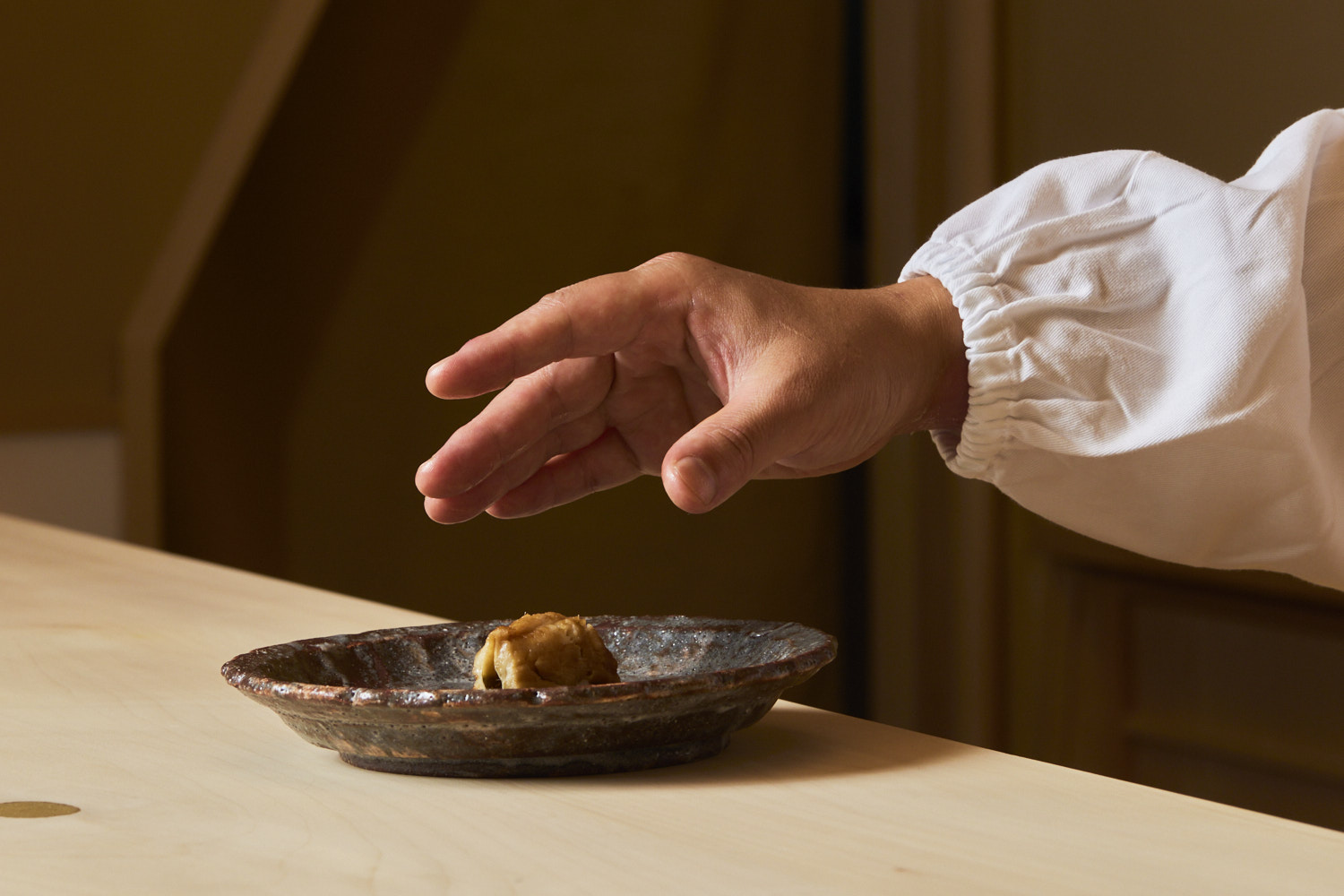
CHEF
Hisanari Funakoshi
Bonito Flakes
Dashi is at the heart of Funakoshiʼs cuisine. The umami-rich broth is made exclusively from the fatty belly of honkarebushi , sourced directly from Makurazaki in Kagoshima Prefecture. The bonitos are caught using low-stress fishing techniques, allowing the flakes to carry a gentle, rounded flavor. Shaved fresh at the restaurant, the flavor is clear and deep, they provide a flavorful and resonant base for the dishes to follow.
Course
- The price includes our booking fee of ¥8,000
- The price includes our booking fee of ¥8,000


